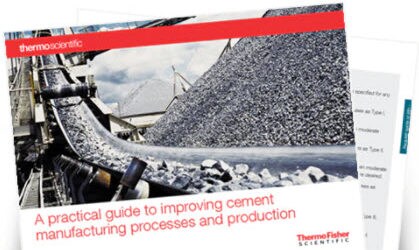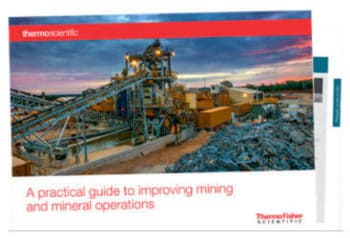Iron ores are rocks and minerals from which metallic iron can be economically extracted during the mining process. Waste elements other than iron (Fe) in iron ore dilute the overall grade of the ore and incur a smelter penalty. Penalty elements change the physical properties of iron and can impede the proper operation of the smelting facility. The ore beneficiation process at a mine is designed to remove as much waste and penalty elements as possible prior to ore transport and smelting. 
The phosphorous (P) content of the iron is a tightly controlled variable in steel making. It can increase the hardness and strength of steel when present between 700 and 1200 ppm, yet the presence of P > 2000 ppm can make steel brittle at room temperature.
Many iron deposits are hosted in banded iron formations (BIFs). These deposits are metamorphosed banded chert (a chemical precipitate in oceans composed mainly of SiO2) and contain large amounts of hematite (Fe2O3). Silicon (Si) is a common penalty element in these iron ores. Most Si is slagged off during smelting, but at temperatures > 1300 °C (2327 °F) it can form an alloy with Fe. Aluminum (Al) is present in clays, micas, and feldspars in some iron ore deposits and in limestone flux used in steel making. Small amounts of Al (< 1%) can increase the viscosity of the slag, which impedes the operation of the furnace. Sulfur (S) can be present as sulfides in iron ore and the coal used in the smelting process. At concentrations > 300 ppm, S causes brittleness in hot iron and iron cannot be used in steel making. Modern steelmakers add manganese (Mn) in proportion to the S to remove it from the steel as a sulfide (MnS).
Can Fe content and the penalty elements that affect its overall grade be determined using XRF?
To determine if iron content could be analyzed using X-ray flurorescence (XRF) technology, iron ore samples were pulverized and loaded into 32 mm XRF cups fitted with a 4 micron polypropylene suspension film. For the purpose of direct comparison with laboratory data, both commercially available and 14 in-house lab-analyzed iron ore samples were analyzed with a benchtop portable XRF analyzer. Though available, helium purge was not required for this analysis. The samples were analyzed for a total of 180 seconds (30 s main filter, 30 s low filter, 120 s light filter). [Analysis time and filter requirement depends on analysis goals. For rapid screening, an analysis of 30 to 60 seconds may be acceptable. All data is shown in weight percent.] Results achieved using a field x-ray lab demonstrate excellent agreement with the certified results.
To see the results, including the correlation curves comparing lab results vs. those obtained with the XRF analyzer, download the Penalty Elements in Iron Ore application note.






After reading this release, I want to know if the results (using XRF) of iron content can be accurate if the sample isn’t pulverized before. What can be the difference?
Hi Francois —
It depends on type of the sample. On pulverized samples, accuracy can be >95% but in rough samples, the accuracy will depend on many things (concentration, matrix, heterogeneity). If it is just pure magnetite, you can adjust calibration and get high accuracy (>90%). If it is iron ore mixed with gangue minerals (less than about 20% Fe), you may use factory calibration.
— Ali